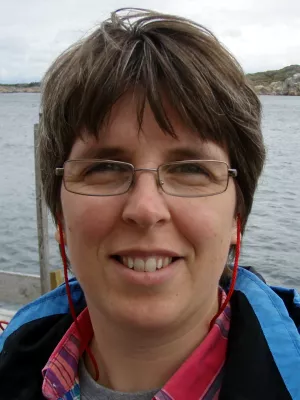
Helena Alexanderson
Professor

Inland dunes of Sweden, an aeolian archive
Author
Summary, in English
Sweden is not famous for its dune fields, and rightfully so; compared to most other countries of the world the Swedish dune fields are humble in size. Also, many of them are inactive and covered by vegetation. Due to this the dune fields of Sweden have been left largely unexplored the last decades. This is unfortunate since many of the dune fields in Sweden are valuable palaeo-environmental time capsules, recording e.g. past wind patterns. We have therefore studied a number of these dune fields and dunes in south-central Swedenusing LiDAR (Light Detection And Ranging) based remote sensing, sedimentological field investigations, optically stimulated luminescence dating and ground-penetrating radar. Here we present one example, Bonäsheden, the largest continuous dune field in Sweden, covering around 15.5 km2. The dunes of Bonäsheden are primar-ily of a transverse type, mainly formed by north-westerly winds, in contrast to most dunes present in former periglacial areas of the world, where parabolic dunes often are the most common type. The lumines-cence ages show that the majority of the dunes formed shortly after the deglaciation of this part of Sweden, around 10.5 ka, and later events of sand drift in the area were limited. Still, there seem to have been an ongoing phase of dune formation for 1,500 years, with a shift at 10 ka from primarily north-westerly dune forming winds to westerly dune forming winds. The reason behind this change in wind direction is still un-known, but the retreat of the Scandinavian Ice Sheet from the area would mean that the katabatic winds would have had a progressively smaller impact on the dune field.
Department/s
- Quaternary Sciences
Publishing year
2017
Language
English
Pages
3030-3030
Links
Document type
Conference paper: abstract
Topic
- Geology
Conference name
Fifth International Planetary Dunes Workshop
Conference date
2017-05-16 - 2017-05-19
Conference place
St George, United States
Status
Published
Project
- Aeolian activity in Sweden: an unexplored environmental archive

